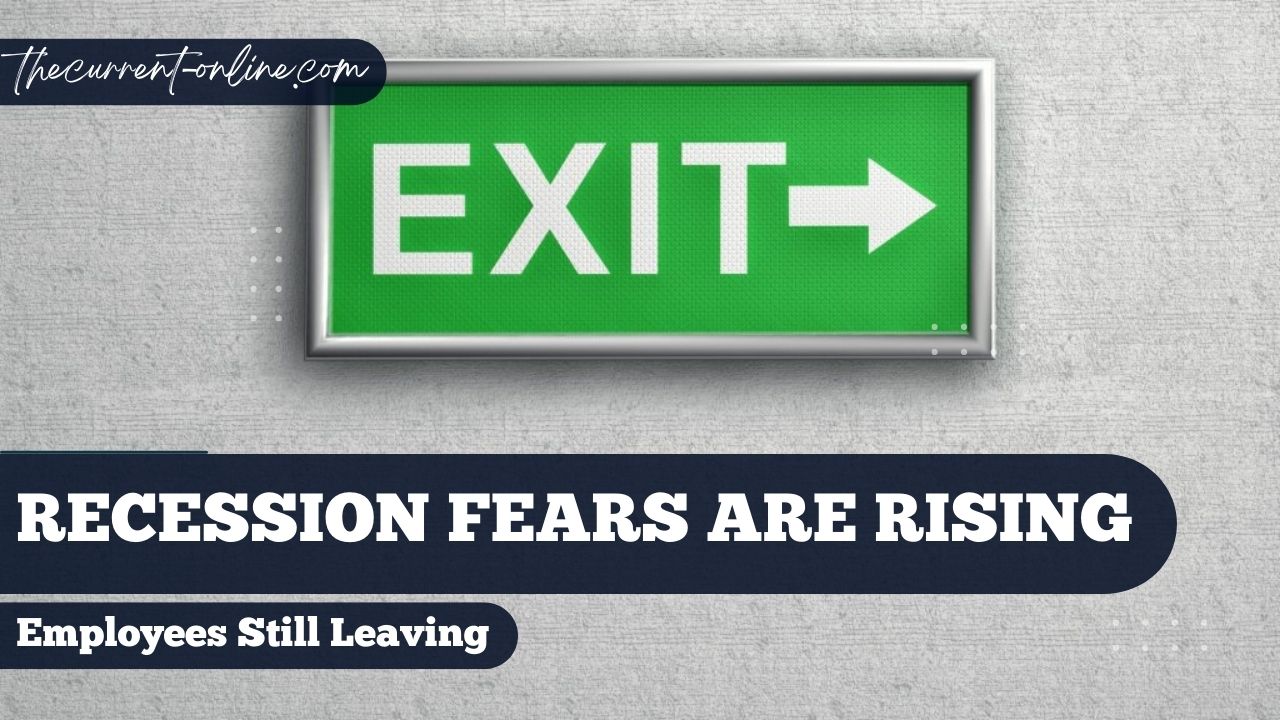The economy appears to be slowing down, interest rates are rising, inflation is continuing to hover at four-decade highs, and analysts worry that a recession is imminent. But despite rising economic uncertainty, Americans continue to leave their employment at almost unprecedented rates.
The number of Americans quitting their employment set a record earlier this year and has since only slightly decreased as the economy slows after two years of rapid expansion. The Labor Department issued data on Tuesday showing that the quit rate decreased to 2.7% in July from 2.9% this spring.
It may seem paradoxical to consider leaving a job in the midst of rising living expenses and an uncertain economic future. However, the labour market has continued to be favourable to employees, who perceive many opportunities to enhance their earnings and offset inflation-related price increases.
AnnElizabeth Konkel, an economist at Indeed Hiring Lab, noted in a Monday research that “despite recent drops, job vacancies still exceed unemployed persons by a substantial margin, demonstrating exactly how tight the labour market is.”
Recession fears are rising. Why are people still quitting their jobs? https://t.co/oecz6Lvj14 pic.twitter.com/wMfTaVxOhb
— The Hill (@thehill) August 31, 2022
According to Labor Department statistics, there were around two available jobs for every unemployed American, providing job seekers with plenty of opportunity to find new jobs with better income or working conditions. The workforce is still smaller than it was before to COVID-19, and businesses are still struggling to find enough workers to keep up with consumer spending, which is far higher than pre-pandemic levels.
Before recruiters begin to perceive an improvement in recruiting conditions, Konkel noted, “It seems probable that employer demand would need to cool substantially more.”
In other words, there are still too many available positions and not enough applicants for firms to avoid raising salaries and other benefits to attract top candidates. And given that inflation is still high, people still have many reasons to leave their current positions in search of ones that pay more.
According to Konkel, job searchers on Indeed.com are seeking incomes that are always rising. In June 2022, the number of Indeed users looking for employment paid $20 per hour overtook those looking for $15 per hour, and the number of job seekers looking for $25 per hour has increased by 122% in the previous 12 months.
Konkel attributed the rise in job searchers wanting more pay to the inflation that has been fueled by the steadily rising advertised earnings.
“Once job searchers are aware that a better salary is attainable, their expectations may change and function as a pull factor in their pursuit for a higher salary. In this instance, it is obvious that job seekers’ expectations have changed from looking for $15 an hour to $20 an hour, according to Konkel.
She continued, “On the other hand, inflation continues to eat away at workers’ paychecks,” pointing out that only 46% of workers saw wage increases that were higher than inflation.
The private sector, where 3.5 percent of the workers departed their existing employer in July, has seen the most pressure to resign in favor of a higher-paying position. Workers in sectors with historically poor earnings, challenging working conditions, and few choices for teleworking have taken the lead in this movement.
The leisure and hospitality industry reported a staggering 6.1 percent quit rate in July; although this is significantly lower than the 6.9 percent leave rate from a year ago, it is still more than twice the national quit rate.
Despite sharply rising wages, businesses like pubs and restaurants have had a difficult time getting back to their pre-pandemic employment levels. Additionally, despite the normal seasonal turnover, the pressure has made it practically hard for those enterprises to terminate or lay off staff.
Hospitality companies claim that the “one strike, you’re out” policy that applied to workers who skipped work without giving notice has changed to a one of “ten strikes, you’re out.” Because they cannot afford to hire replacements, companies are unable to fire employees, according to Julia Pollak, the chief economist at ZipRecruiter.
The decrease in layoffs in sectors like hospitality has been so significant, she said, that it has more than compensated for the rise in layoffs in the IT industry.
Additionally, high quit rates have been observed in the retail (4%) and transportation and warehousing (3.5%) sectors, both of which are threatened by a drop in consumer expenditure on products and an increase in financing rates.
However, there are some indications that employee trust is ebbing, which could result in a drop in resignations.
In August, the job seeker confidence index at ZipRecruiter fell 4.5 points to an all-time low of 97.8, according to Pollak, as more candidates prioritized job security over higher pay.
Since the pandemic, job candidates have been seeking positions with higher salaries, lower stress levels, and more flexibility. However, in August, job security moved up to the number two slot in their list of priorities, according to Pollak.
“One in four job searchers who are employed report feeling less secure than they did six months ago about their current position. Employees are now increasingly worried about the precarity of their jobs as the likelihood of a recession is increasing and there have been a lot of recent tech layoffs.
